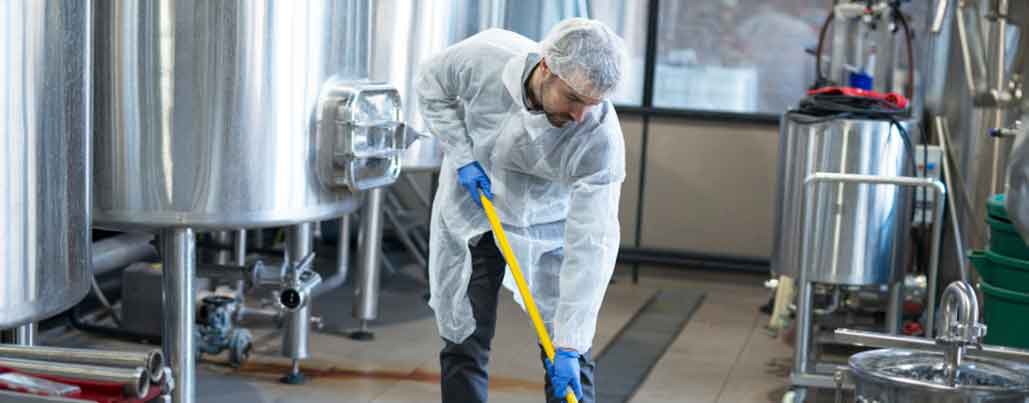Blog
- Home
- blog

How Often Should You Clean Your Grease Trap? The Ultimate Guide for Restaurant Owners
As a restaurant owner, maintaining the cleanliness of your kitchen is paramount to ensuring the safety, hygiene, and efficiency of your operation. One critical area that often gets overlooked is the grease trap. Grease traps play an essential role in capturing fats, oils, and grease (FOG) that are produced during cooking. However, if not properly maintained, these traps can become a significant source of unpleasant odors, blockages, and even potential fines.
In this ultimate guide, we’ll discuss how often you should clean your grease trap, the importance of regular maintenance, and how to choose the right restaurant grease trap cleaning services to keep your kitchen running smoothly.
Get in touch
Would you like to connect with us?
Why is Grease Trap Cleaning Important?
A grease trap is designed to collect FOG that would otherwise enter your plumbing system and cause clogs, slow drainage, and even costly repairs. Over time, if not cleaned regularly, grease can build up and create a variety of issues, including:
- Bad Odors:As the grease decomposes, it can produce a foul smell, which can spread throughout the restaurant.
- Blocked Pipes:A greasy, clogged pipe is a serious problem that could lead to significant disruptions in kitchen operations.
- Health and Safety Risks:Untreated grease can breed harmful bacteria, posing health risks to both your staff and customers.
- Fines and Legal Issues:In many regions, there are strict regulations on the maintenance of grease traps. Failure to comply can result in fines.
Regular grease trap cleaning is crucial for both the longevity of your plumbing and the cleanliness of your establishment.
How Often Should You Clean Your Grease Trap?
The frequency of cleaning your grease trap depends on several factors, including the size of the trap, the volume of grease your kitchen produces, and local regulations. However, as a general guideline, it is recommended to clean your grease trap every 1 to 3 months.
Factors Affecting Cleaning Frequency:
- Size of the Grease Trap:Larger traps can handle more grease and require less frequent cleaning.
- Restaurant Size:High-volume kitchens, such as those in fast-food chains or large banquet halls, will generate more grease and require more frequent cleaning.
- Type of Cuisine:Restaurants that use a lot of fried food or oily dishes may need to clean their grease traps more often.
- Regulations:Some local authorities may mandate cleaning schedules based on the size of your trap or your restaurant’s operations.
For optimal performance, the grease trap should be cleaned when it is 25% full. This is the point where grease begins to back up and may cause issues in your plumbing.
Signs It’s Time to Clean Your Grease Trap
While regular maintenance is key, there are several signs that can indicate it’s time for a cleaning:
- Slow Draining:If you notice that water is draining slower than usual, it could mean that your grease trap is clogged.
- Bad Smells:Foul odors in the kitchen or dining area are a sure sign that your grease trap needs attention.
- Frequent Plumbing Issues:If you’re experiencing repeated blockages or plumbing problems, it may be due to grease buildup in your system.
How to Choose the Right Restaurant Grease Trap Cleaning Services
Choosing the right service provider for grease trap cleaning is crucial to ensuring the longevity and proper functioning of your system. Here are a few tips to consider:
- Experience:Choose a company with extensive experience in restaurant grease trap cleaning services. They will have the necessary expertise to perform the job quickly and efficiently.
- Licensing and Insurance:Ensure that the service provider is licensed and insured to handle grease trap cleaning.
- Environmental Responsibility:The company should be committed to environmentally friendly disposal methods for the collected grease.
- Reputation:Look for reviews or ask for references to gauge the reliability and professionalism of the service provider.
FAQs About Grease Trap Cleaning
- How do I know when my grease trap is full?
A typical sign is slow drainage, bad odors, or water backing up. Additionally, your grease trap service provider should monitor the trap and notify you when it’s time for a cleaning. - Can I clean my grease trap myself?
While it is possible to perform a basic cleaning, it is highly recommended to hire a professional grease trap cleaning service. Professionals have the equipment and expertise to thoroughly clean the trap, preventing damage to your plumbing system. - How much does grease trap cleaning cost?
The cost varies depending on the size of the trap, frequency of service, and location. On average, grease trap cleaning can range from $150 to $500 per visit. - Can grease trap cleaning prevent future blockages?
Yes, regular grease trap cleaning can help prevent blockages by removing the grease buildup that causes clogs. - Are there any legal requirements for grease trap cleaning?
Yes, many local municipalities have regulations regarding grease trap maintenance. Failing to comply can result in fines or legal issues.
Grease trap maintenance is a vital part of your restaurant’s operations. By understanding how often to clean your grease trap and why it’s essential, you can avoid costly repairs, health risks, and unpleasant odors. Regular cleaning by a professional restaurant grease trap cleaning service will keep your kitchen in top condition, ensuring a smooth and efficient operation. Remember, when in doubt, it’s always better to schedule cleaning more frequently than too infrequently!

